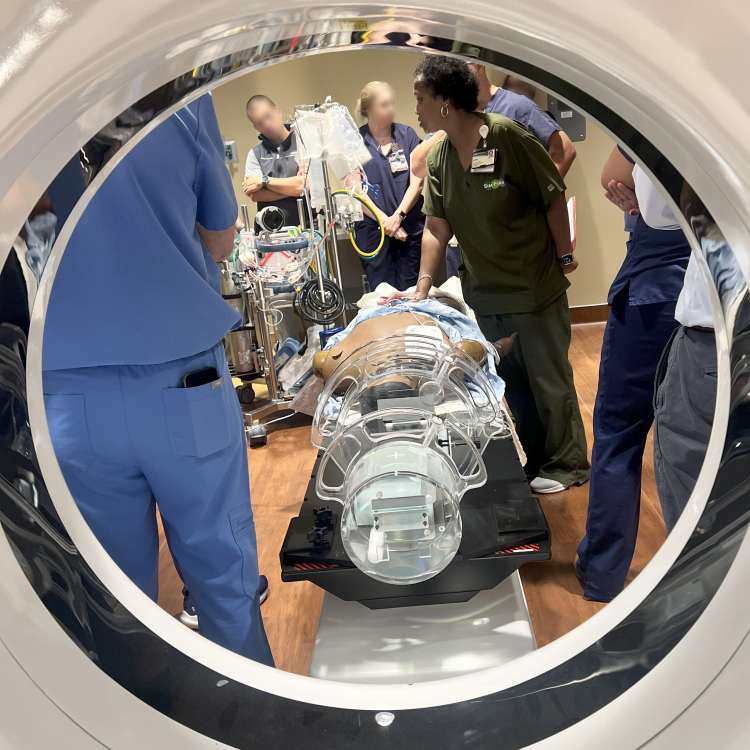Clin Sim hosts brachytherapy emergency response simulations

Diverse expertise plus interprofessional collaboration equals advanced patient safety.
It’s an equation UAB Clinical Simulation deployed in a recent partnership with UAB Medicine Ambulatory Implementations, Radiation Oncology, the Department of Anesthesiology and Perioperative Medicine, the Center for Patient Flow’s Nursing Resource Team, the Mechanical Circulatory Support Team and the Medical Emergency Team to conduct brachytherapy emergency response simulations.
As the Radiation Oncology team prepares to open the new brachytherapy suite, key personnel gathered to test the logistics of navigating the space with the appropriate teams and equipment. These systems simulations also provided an opportunity to evaluate emergency responses for both Code MET and Code ECMO.
Interprofessional teams worked through the management of a simulated adult resuscitation in the newly designed suite. Between scenarios, participants engaged in lively discussions on how to safely care for patients in this unique environment, how to access available resources and how to plan effective exit strategies.
The simulations continued with a complex scenario involving a patient requiring extracorporeal membranous oxygenation (ECMO)—a life-saving intervention reserved for severe cardiac or respiratory failure. These simulations sparked spirited dialogue and collaboration, equipping teams with valuable insights to guide the successful launch of the brachytherapy suite.
“This wasn’t just a set of scenarios—it was a system-level rehearsal of care in a new, high-acuity environment,” said April Belle, director of systems simulation with UAB Clinical Simulation, who facilitated the simulation with Jessie Gross, manager of ambulatory services with Radiation Oncology. “The work surfaced how people, processes, technology and the built space interact under pressure, and it gave teams a safe place to align on what ‘excellent’ looks like when seconds count.”
As learners and facilitators observed, “By bringing together diverse expertise and fostering interprofessional collaboration, these simulations not only strengthened emergency preparedness but also advanced patient safety and readiness for this important new clinical space.”
To learn more about systems simulation, visit here. How can systems simulation work for you? Email simulation@uabmc.edu to find out.
UAB Medicine’s Clinical Simulation program offers opportunities for individuals and teams across UAB Medicine and beyond to practice before they deliver care. We encourage all who provide and support patient care to “Sim First.” Together, we can put our patients’ safety first.




0 Comments